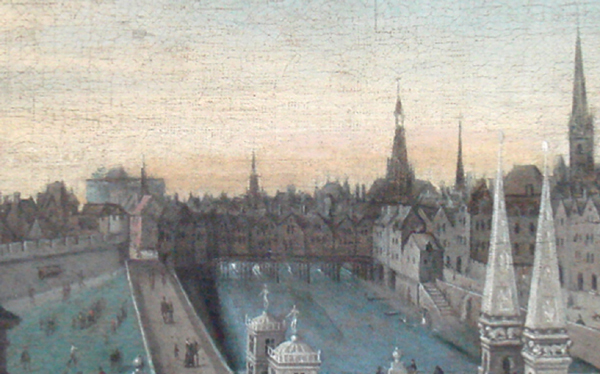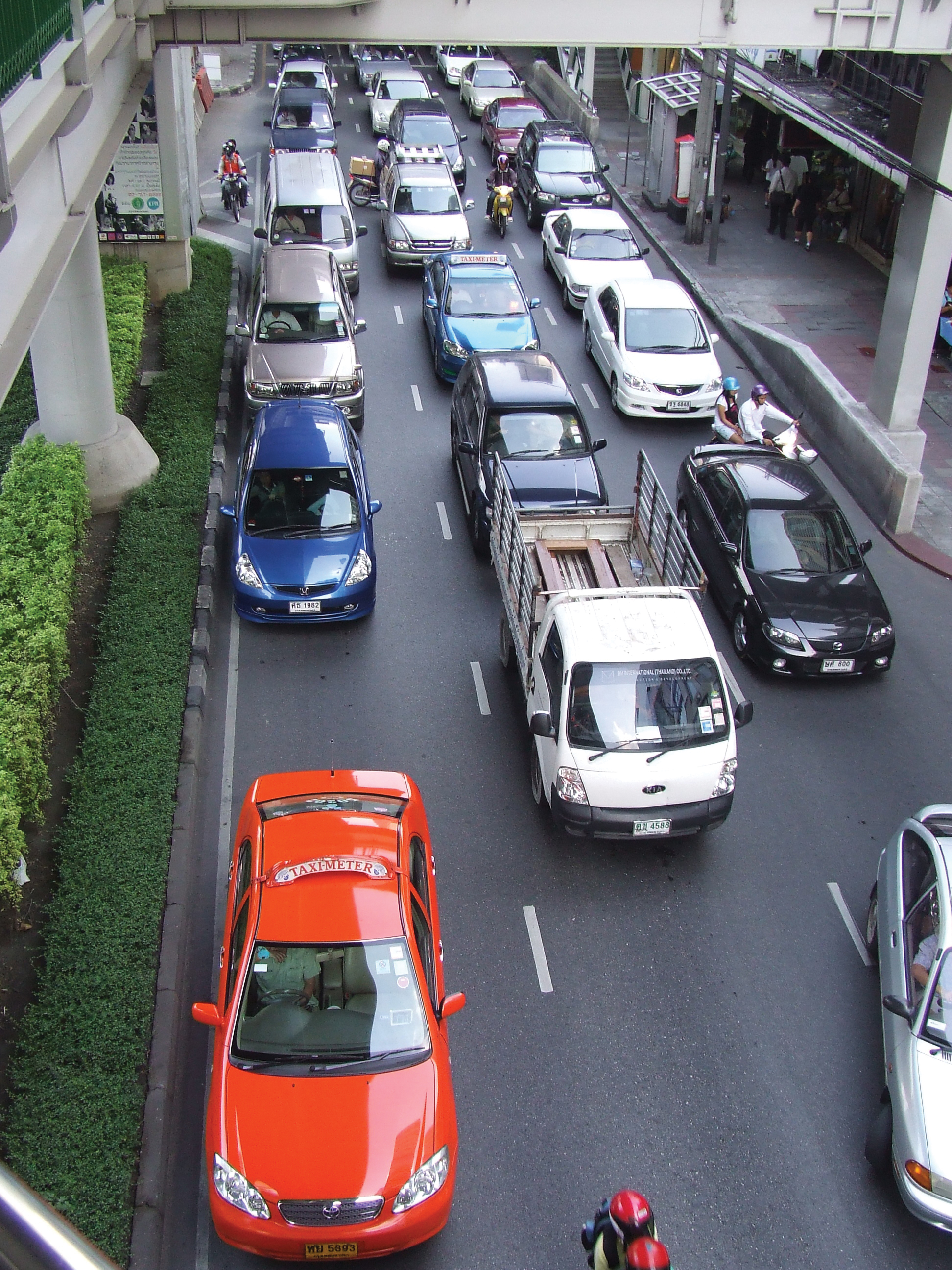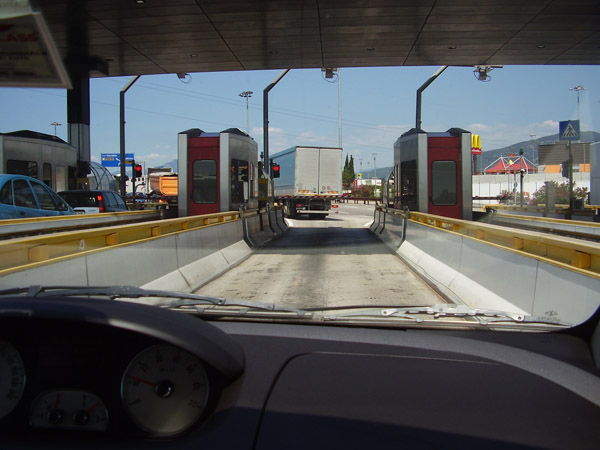Michel Démarre gives some historical insights into public-private partnerships conceived to implement urban infrastructure projects, a concept that surprisingly dates back to as early as the 13th century!
All over the world today, the role of public authorities in the process of planning and, in most cases, designing, financing and procuring urban roads is paramount. Even for modifications to existing roads, decisions are made by these public authorities (usually after due consultation with the population)

Detail from a painting showing a project for the Pont Saint-Michel, or Pont-Neuf, in the 16th century(Musee Carnavalet, Paris)
Michel Démarre gives some historical insights into public-private partnerships conceived to implement urban infrastructure projects, a concept that surprisingly dates back to as early as the 13th century!
All over the world today, the role of public authorities in the process of planning and, in most cases, designing, financing and procuring urban roads is paramount. Even for modifications to existing roads, decisions are made by these public authorities (usually after due consultation with the population) and the private sector is left with the limited role of implementing such decisions.While, for interurban roads, the private sector may be left with some leeway to propose alternative layouts in Public-Private Partnership (PPP) type schemes, this would hardly be acceptable for ring roads around major cities, and probably even less acceptable inside the cities themselves. The maximum extension of the private sector's role may be found in so-called greenfield urban development areas, after they have been authorised by public authorities.
This has, however, not always been the case, and history is rich in examples of where the private sector has played a much larger role; if not in the planning of urban roads, at least in the ensuing phases.
Special tribute should be made in this respect to the work of the French historian Xavier Bezançon, who has investigated numerous public works contracts spanning back over almost two Millennia. His landmark research has highlighted the significant contribution made by the private sector throughout the ages towards procuring public services in general, and transport infrastructure in particular, including roads and bridges, even in urban areas. Much of the following is drawn from his inspirational books.
Creation of the bastides
On numerous occasions throughout history, the successful creation of towns or cities has involved a high degree of private participation. Perhaps the most striking example can be derived from those towns in south-western France known as bastides. The establishment of more than 300 such bastides in the 13th century was essentially based on a partnership system between, on the one hand, populations prepared to move in order to improve their status and, on the other, real estate owners. The latter would typically include local Lords, and even possibly the Kings of France or England, who would have ownership of undeveloped lands.Such owners would enter into special contracts to join their respective plots of neighbouring land into one large connected area, to be developed as a resettlement colony (or bastide). They would then attract people to live there by jointly setting up a community, with its own law and fiscal regime to ensure clearly established and stable rules.
Inhabitants would be allocated a plot of land on which to establish a house, a garden and an area to be ploughed. In exchange, they would commit to timely construction and to paying real estate taxes to the Lords. Besides greater opportunities for working, studying and trading, these new towns also offered a more democratic system of administration.
Although the connection with road construction may not at first seem apparent, one only has to glance at the typical layouts of these bastides, with their central square, to agree that this type of contract produced original urban designs; including, of course, the corresponding infrastructure.
Bezançon cites another early example of PPP initiative occurring in Paris at the end of the 14th century, when it was decided to build a new bridge over the River Seine.
In those days, finance towards the realisation of such projects was commonly provided by concessions awarded to rich individuals; who in return received an entitlement to income in perpetuity from houses build along the bridge itself. The new bridge was named Pont Saint-Michel (St. Michael's Bridge) and also commonly referred to as Pont-Neuf (not to be confused with the present day bridge of that name).
Sadly, the original structure did not withstand frozen ice in the particularly harsh winter of 1408 and collapsed. Interestingly however, it was rebuilt according to the same type of financing arrangement, and it was not until the 18th century that shops and houses were finally banned from bridges in Paris. The painting on the previous page gives an indication of what the Pont Saint-Michel would have looked like in the 16th century.
A living example that survives to this day is the Ponte Vecchio in Florence, Italy, where jewelry and art is still sold from the shops that flourish on the bridge. Less known to the tourists, however, is the corridor that runs along the upper level of these buildings. Linking Palazzo Vecchio and Galleria degli Uffizi on the left bank with Palazzo Pitti on the right bank, this raised thoroughfare added a strategic or political dimension to the economic one.
The Haussmann era in Paris
Perhaps, however, the most striking example of private participation in the field of urban road infrastructure is the profound reshaping of Paris that occurred from 1852 to 1869, at the instigation of Napoleon III and Baron Georges-Eugène Haussmann, the Prefect of the Seine administrative department. During this period, 42 "road concession treaties" were signed. As a result, extensive roads, avenues and squares were built in about 50 different sites.Road works typically included not only the construction of new carriageways, but also the installation of water pipes, sewage pipes, street lighting, tree plantations and public benches.
Private concessionaires recouped part of their investment from direct payments made by the City of Paris - usually to cover the cost of right-of-way acquisition. The rest was recovered from the sale of pieces of land along the road infrastructure. These were made available after the works had been completed, and were subject to a strict contractual stipulation, imposed on the concessionaire, that buildings should be immediately constructed on the plots concerned.
Such contractual clauses were progressively fine-tuned over time as both the City of Paris and potential investors became more familiar with this type of contract, and the risks associated with it. Many features present in today's PPP contracts were already prevalent in these 19th century forerunners - including, to cite just a few examples, mechanisms enabling the assignment of receivables to a financial company and profit-sharing between the City and the concessionaire, or land swaps.
It is often alleged that Baron Haussmann's motivations in renovating Paris were of a strategic nature - notably to facilitate a crackdown on possible insurgents and the erection of barricades. Even if this may, or may not, be partially true, however, the full extent and nature of the work undertaken suggests that his ambitions clearly extended far beyond this sole purpose. For instance, tens of thousands of Parisians had died in the first half of the 19th century from cholera epidemics, so improving health conditions as well as architecture and landscaping were also strong objectives.
Even prominent political rivals eventually admitted that the operations were both worthwhile and successful in this respect. In 1882, despite being a fierce opponent of the Second Empire, the French newspaper Le Gaulois paid tribute to Baron Haussmann's achievement in these terms:
"Narrow and filthy lanes were plentiful within the city. We lacked water, markets and light in those far-off times ... Only a few gas lamps were to be seen...
He demolished whole areas; we could even say whole towns. We were yelling that he would bring the plague upon us. He would let us yell and bring us, on the contrary, air, health and life by virtue of his shrewd clearing works. Sometimes he would create a street; sometimes an avenue or a boulevard; sometimes a square, a public garden or a promenade.
He would establish hospitals and schools. He would bring us a whole river. He would dig magnificent sewers. He would erect barracks, theatres. From nothing, he would build the Champs-Elysées, the Bois de Boulogne, the Bois de Vincennes. He would set up a central food market, bring gas into widespread use, and add more bus lines ... He would introduce trees and flowers in his beautiful capital city. He would fill it with statues"
From 1853-1870, more than 600km of sidewalks, 840km of water pipes and 16,000 streetlights were installed in Paris. The development of PPPs had contributed significantly to the socio-economic development of the city.








